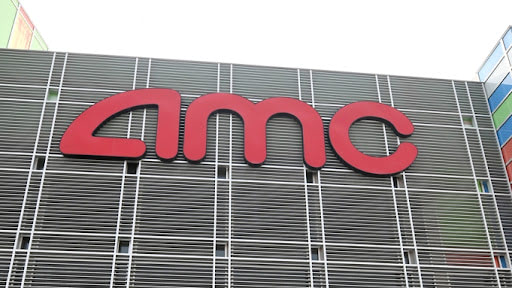Source: Variety
It’s hardly surprising to anyone to say that theaters have been struggling for quite some time and have become increasingly desperate to find new ways to make money. The emergence of the COVID-19 pandemic has certainly made the whole situation worse, but even with the state of the world inching closer to something resembling normalcy, as well as blockbusters like “Top Gun: Maverick” and “Black Panther: Wakanda Forever” bringing in respectively large crowds, theaters haven’t been able to sell quite enough tickets to their liking. Making a profit in an age where going out to one’s local cineplex is becoming somewhat less desirable is far from an easy feat, but it’s perhaps that desire to bring in more revenue that might be one of the major problems to begin with. With the average American ticket price ranging anywhere between $10 and $15, perhaps even more depending on the location/format in which a given film is presented in (e.g. IMAX or Real-D 3-D), on top of the alarmingly high costs of popcorn and other concessions, many people aren’t as willing to see a film on the big screen if it isn’t some kind of major must-see event. From a theater owner’s perspective, these high prices do make sense – they only make so much from selling tickets (as a bulk of the revenue goes to the studios), so concessions are more heavily relied on to make a profit – but not so much for a casual filmgoer who may only be inclined to pay so much money occasionally. For many theater chains, this predicament is a double-edged sword: finding a way to increase revenue is necessary to stay in business, but the wrong strategy could discourage audiences and cause sales to drop even lower than before. This is a dilemma that AMC Theatres, the nation’s largest theater chain at the moment, may have to contend with after announcing a bold new strategy that many are already crying foul over.
The strategy in question is one called Sightline at AMC, which will use the location within a given auditorium to determine the price of a single ticket. In a manner similar to other entertainment venues like sports stadiums and concerts, AMC intends to divide each auditorium into specific sections and charger either a higher or lower price depending on which is seen as the more desirable seating for watching a film on the big screen. According to AMC, there will be three different pricing options to choose from: Standard Sightline, which is designated to the seats that are described as “the most common in auditoriums and are available for the traditional cost of a ticket”; Value Sightline, described as “seats in the front row of the auditorium, as well as select ADA seats in each auditorium, and are available at a lower price than standard sightline seats” (this option will only be available to those who are part of AMC’s Stubs membership program); and Preferred Sightline, which refers to “the seats in the middle of the auditorium and are priced at a premium to standard sightline seats”, even though AMC Stubs’ A-List members will not have to pay an additional cost to reserve seats here. Although Sightline at AMC is set to commence on Friday starting with select locations in New York City, Chicago, and Kansas City, the plan is currently set to be put in place at all AMC theaters within the country before the year’s end. However, the plan is only expected to apply for showings past 4:00 PM and on normal days of operation, meaning that matinee screenings and the chain’s Discount Tuesdays (when all tickets cost only $5) will not be affected by Sightline at AMC at this time.
In announcing Sightline at AMC, executive VP and CMO Eliot Hamlisch compared the strategy to that of other popular entertainment venues and claimed that it will allow filmgoers to find greater value in the cinematic experience. “While every seat at AMC delivers an amazing moviegoing experience, we know there are some moviegoers who prioritize their specific seat and others who prioritize value moviegoing,” Hamlisch states. “Sightline at AMC accommodates both sentiments to help ensure that our guests have more control over their experience, so that every trip to an AMC is a great one.”
This is far from the first time theaters have experimented with changing the ticket price for specific films and seats – AMC actually charged a dollar or two more for tickets to Warner Brothers’ “The Batman” last year, while just recently, select screenings for Paramount’s “80 for Brady” actually decreased ticket prices in an effort to attract older filmgoers that made up much of the film’s target demographic – but if implemented, Sightline at AMC will have the widest scale of any price-raising strategy yet, and unfortunately, many are already taking an issue with what they accuse of being a means in which theaters can further alienate those who were already struggling to go to their local theater on, at most, a semi-regular basis.
Among the more noteworthy critics of this new initiative is actor Elijah Woods, best known for such film series as “Happy Feet” and “The Lord of the Rings”, who spoke out on social media and condemned AMC for what he believes is an effort that will hurt lower-income filmgoers. “The movie theater is and always has been a sacred democratic space for all,” Wood wrote on Twitter. “This new initiative by AMC Theatres would essentially penalize people for lower-income and reward for higher income.”
Joining Wood in this criticism of Sightline at AMC was John Rocha, a YouTube film critic who was far less concerned with refraining from direct and profane language in statement against the strategy. “Look, this is some classist shit. IMAX, 4DX, 3D, Screen X charging more makes sense since you’re getting the film in a new way. BUT this is not the way. Poor people, you sit in the poor section and you rich folks please move the velvet ropes around the middle section to find your seats,” Rocha claims, echoing a similar concern to Wood’s regarding Sightline’s effect on less affluent filmgoers. “However, this is not too big of a surprise to me. If you’ve been following me for a few years, you know that I’ve stated that the time is coming when tickets to a movie will be like tickets to Broadway. This is a big step in that direction.”
Will Rocha’s concerns be confirmed through the implementation of Sightline at AMC? Or will it be a beneficial experience for both theaters and audiences? Only time will tell, but the controversy generated so far serves as a solid reminder as to what can happen if businesses become too desperate to increase profits without considering a possible backlash from the public.




